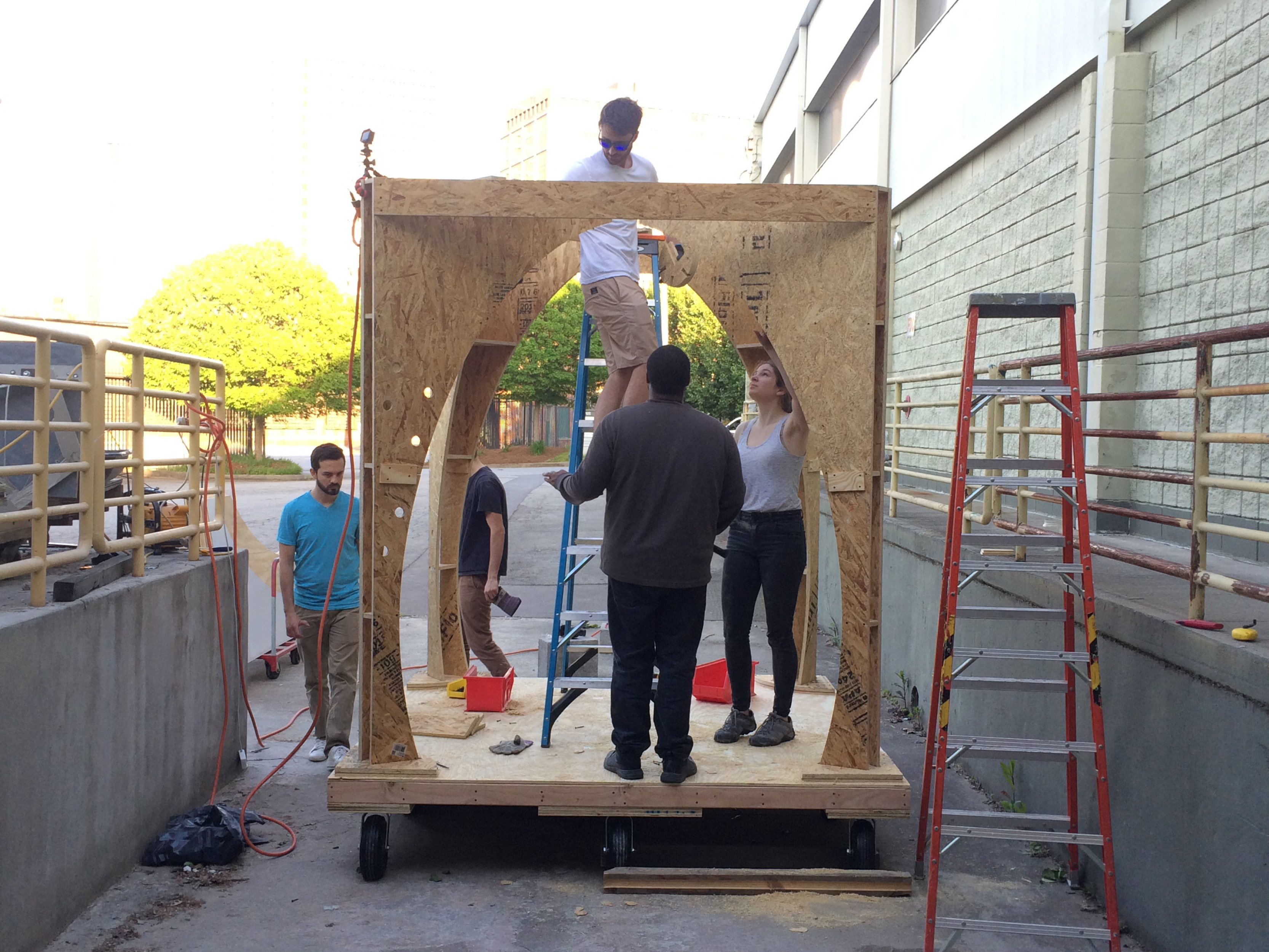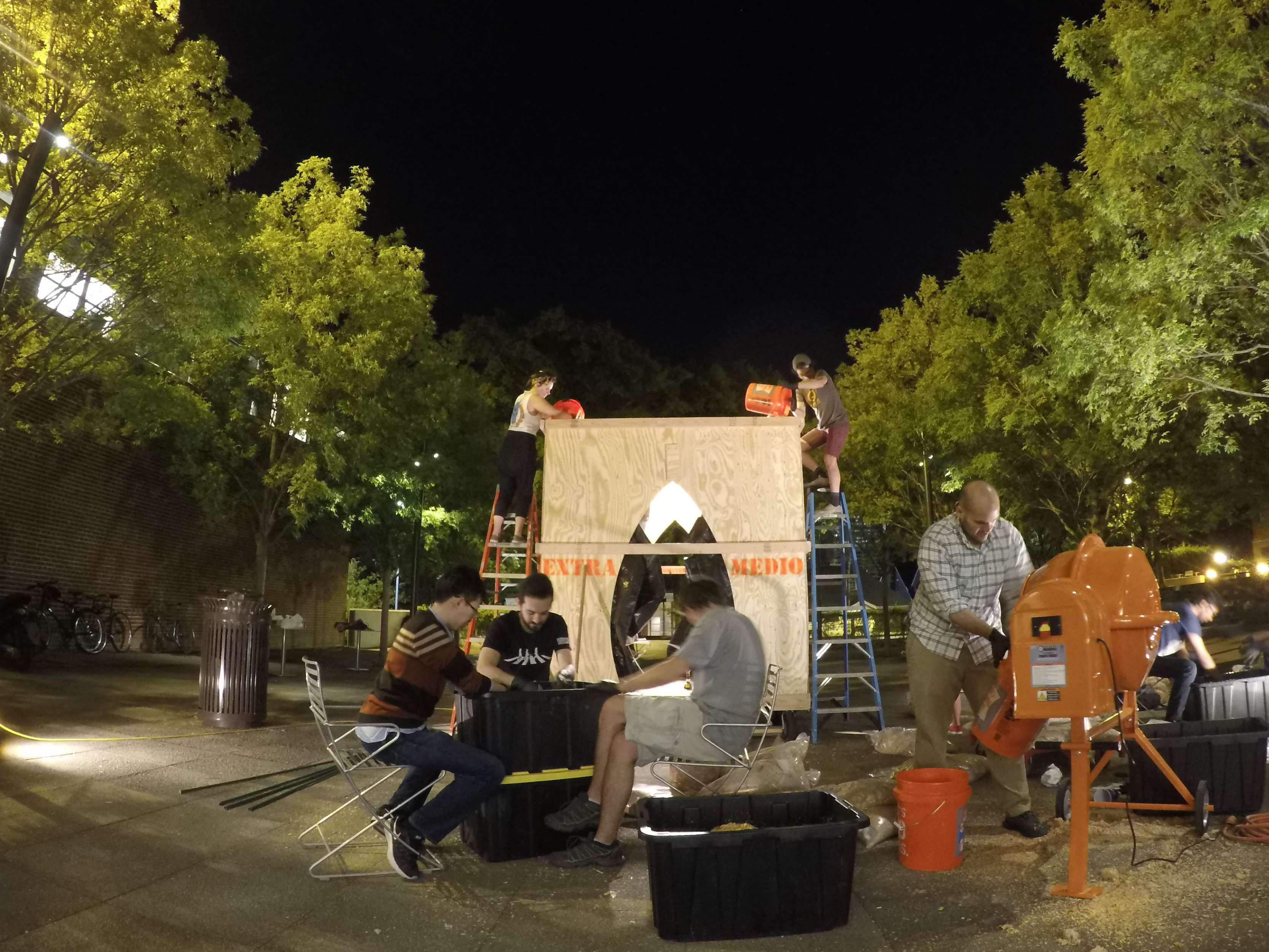Abstract:
This collaborative construction project produced advancements in mycelium construction, demonstrated through a large-scale monolithic mycelium vault prototype structure. In the burgeoning field of bio-materials, mycelium has emerged as a contender to become a commercially-viable building material. Whereas the mushroom is the fruit part of fungus, mycelium is the plant part. Perhaps totally unknown to most, these white, web-like roots are everywhere underground. They play an integral role in the way our natural environments grow and thrive; building networks between our farms, forests, and water-ways. As a potential building material it is naturally occurring, demands little energy for its production, is lightweight, and completely bio-degradable. Previous attempts of architecture-scale mycelium pavilions have taken a common approach, building aggregations of bricks or other “masonry” units. Here, self-supporting mycelium structures were grown-in-place, resembling common monolithic construction practices for cast-in-place concrete. Monolithic mycelium inherits many of the advantages of concrete techniques, including the use of flexible formwork materials.
Link to full paper “Monolithic Mycelium: Growing Vault Structures” (NOCMAT 2019)
This collaborative construction project produced advancements in mycelium construction, demonstrated through a large-scale monolithic mycelium vault prototype structure. In the burgeoning field of bio-materials, mycelium has emerged as a contender to become a commercially-viable building material. Whereas the mushroom is the fruit part of fungus, mycelium is the plant part. Perhaps totally unknown to most, these white, web-like roots are everywhere underground. They play an integral role in the way our natural environments grow and thrive; building networks between our farms, forests, and water-ways. As a potential building material it is naturally occurring, demands little energy for its production, is lightweight, and completely bio-degradable. Previous attempts of architecture-scale mycelium pavilions have taken a common approach, building aggregations of bricks or other “masonry” units. Here, self-supporting mycelium structures were grown-in-place, resembling common monolithic construction practices for cast-in-place concrete. Monolithic mycelium inherits many of the advantages of concrete techniques, including the use of flexible formwork materials.
Link to full paper “Monolithic Mycelium: Growing Vault Structures” (NOCMAT 2019)
The Mycelium Monolith: A bioPavilion
Atlanta, GA
2018
Construction Team:
Roberto Bucheli, Chao Dang, Bennett Crawford, Keyhan Khaki, Anna Mccuan, Sean Miller, Sounok Sarkar, Matt Singleton, Justin Wilson,
Jessica Bilgrad and Julia Jones (Bilgrones)














Other Projects: